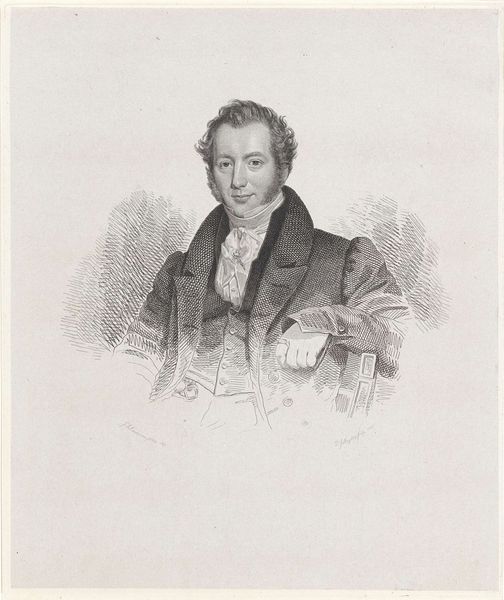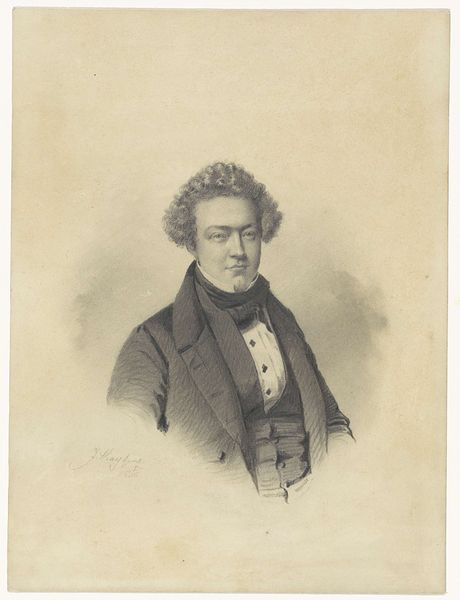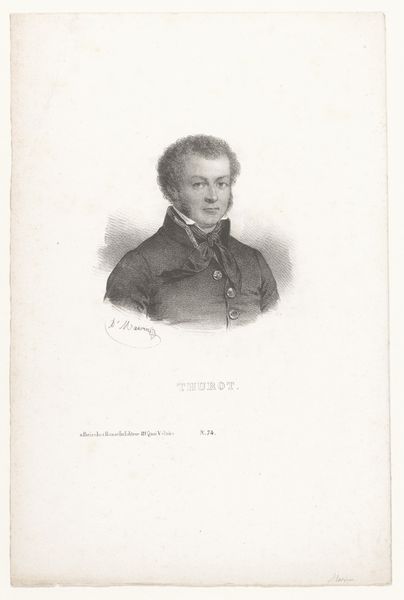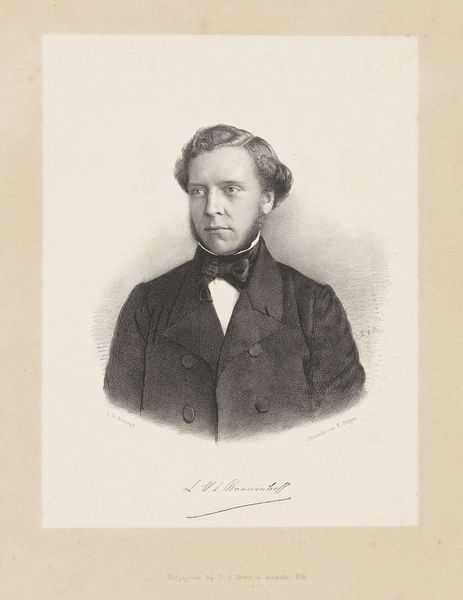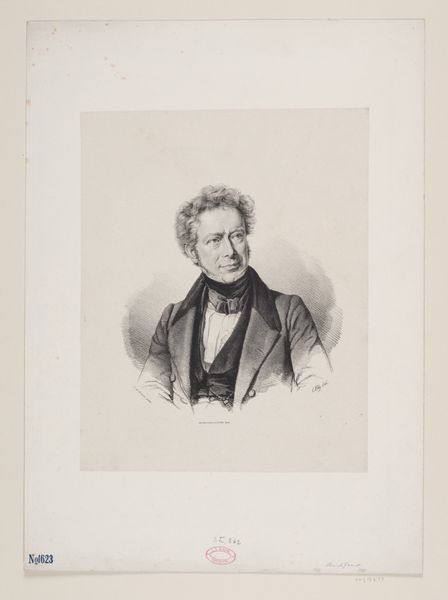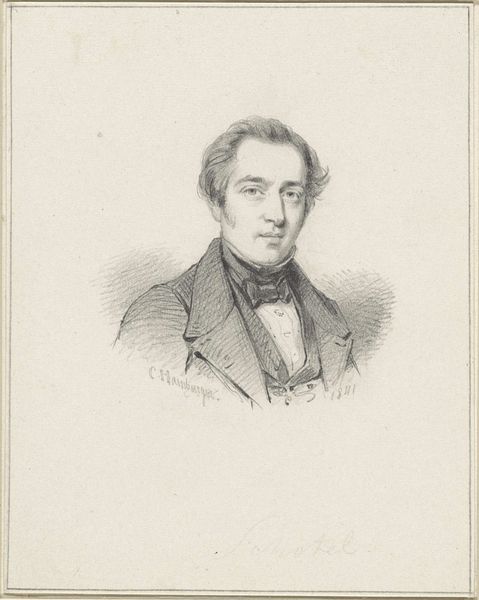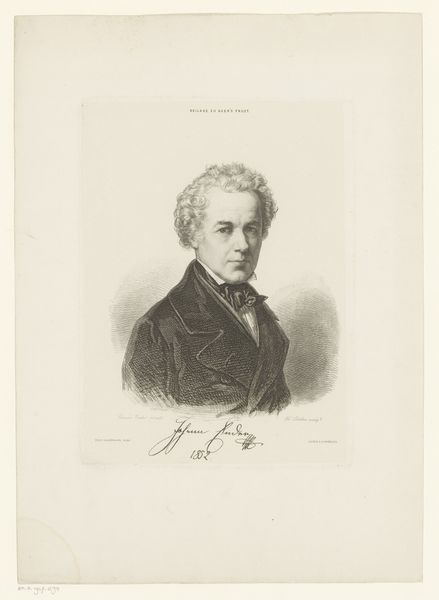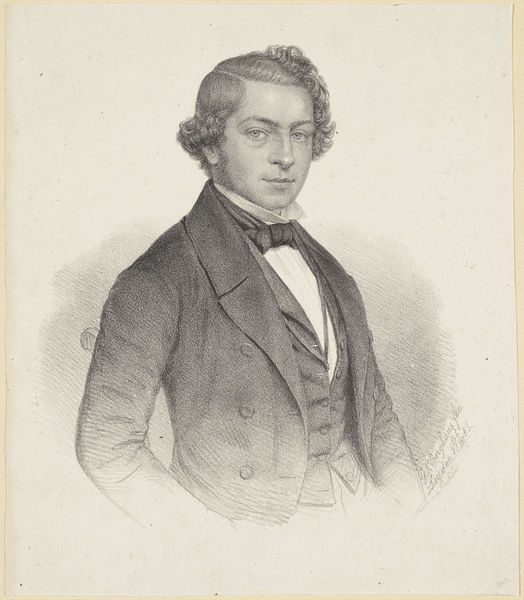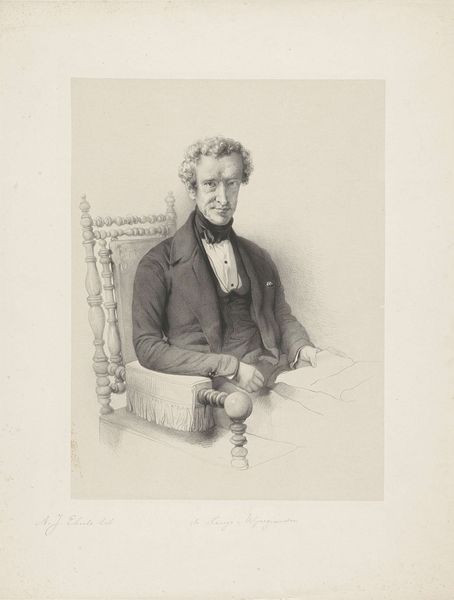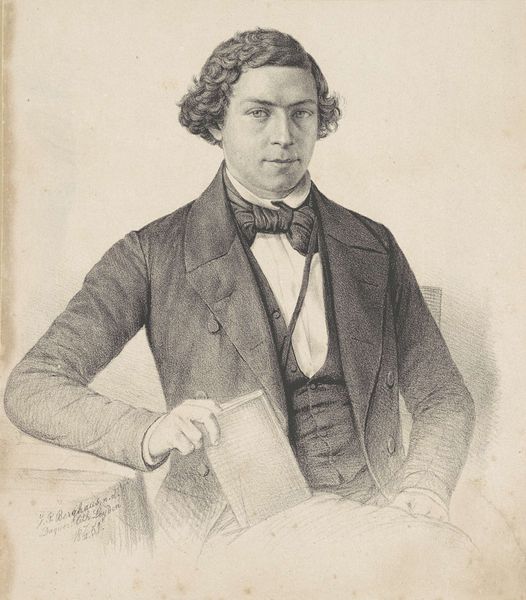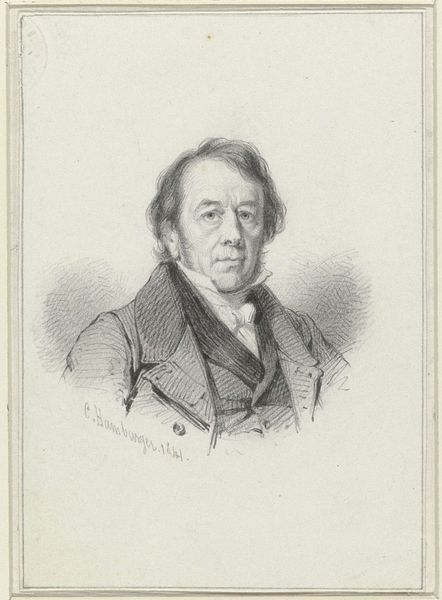
#
pencil drawn
#
light pencil work
#
photo restoration
#
pencil sketch
#
old engraving style
#
portrait reference
#
pencil drawing
#
yellow element
#
portrait drawing
#
pencil work
Dimensions: height 218 mm, width 155 mm
Copyright: Rijks Museum: Open Domain
Editor: Here we have a portrait titled "Portret van Jacobus Josephus Eeckhout," made sometime between 1826 and 1854. It looks like a pencil drawing, currently residing in the Rijksmuseum. There's a quiet intensity to this piece. What strikes me is the way Eeckhout, the artist, portrays the sitter as a working artist himself, holding his palette and brush. How do you interpret this work within the context of its time? Curator: It's interesting you picked up on the performative aspect of the portrait. This was a period where the identity of the artist was becoming increasingly romanticized. He's not just portraying Eeckhout; he's presenting a particular *image* of the artist as an intellectual and skilled creator. How do you think that image functions within the burgeoning art market of the 19th century? Editor: That's fascinating! I guess it's about legitimizing the profession, showing the artist as someone respectable and educated, not just a craftsman. So the portrait becomes a form of advertising, in a way? Curator: Precisely! It's about crafting a public persona that aligns with the values of the rising middle class who were becoming the new patrons of the arts. Think about the growing importance of art academies and public exhibitions during this time; this portrait reflects the institutionalization of art. How might seeing this portrait in the Rijksmuseum today further shape our understanding of the artist's role in society, both then and now? Editor: I see your point! Placed in a museum now, it adds another layer: it elevates Eeckhout further, solidifying his place in art history, but also somewhat freezes him in time. It makes you wonder how Eeckhout saw his own role at the time and if this aligned with the eventual image constructed of him. I never thought a portrait could be so telling about the socio-political climate! Curator: Indeed. Art doesn’t exist in a vacuum; it's a reflection of and a participant in the ongoing dialogues of its time. I’m glad we could unravel a bit of that today.
Comments
No comments
Be the first to comment and join the conversation on the ultimate creative platform.

